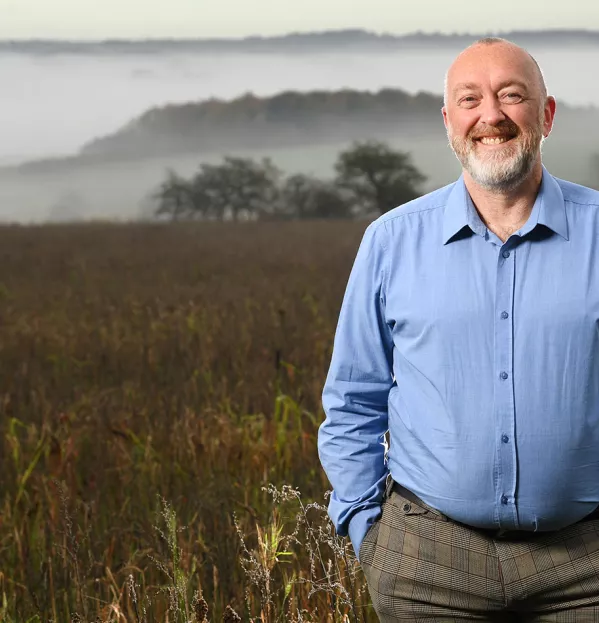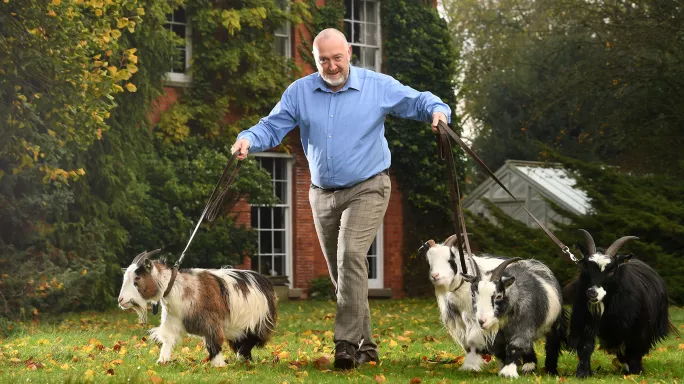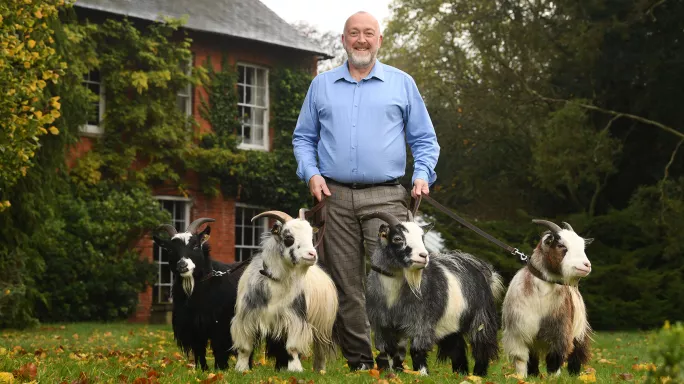- Home
- Leadership
- Strategy
- Sir Steve Lancashire: how we got a MAT-led system
Sir Steve Lancashire: how we got a MAT-led system

“I got to my car and put my hand under the handle to open the door. When I pulled it away, I saw I was bleeding - they had stuck razor blades under the handle. I looked up and saw dog crap all over the car roof, too. I thought, ‘I’ve got to just get in the car and drive’.”
The location for these macabre events was south-east London, on a cold, bitter October evening in 2012. Yet this is not a gang leader or undercover police officer talking, but Sir Steve Lancashire, who was then chief executive of REAch2, the primary-only multi-academy trust he had set up a year before.
The reason he was being targeted with such vicious attacks? He was visiting a school to chat with its governors and leaders about the possibility of joining REAch2. Clearly, not everyone in the local community was on board - and it wasn’t the only animosity he experienced in his early days of MAT leadership.
“On another occasion, I went to a school in the Midlands and parents had literally chained themselves to the railings of a school in protest at the potential the school might join our academy,” he remembers.
Both events he found confounding: “I thought, ‘I’m trying to build a trust that’s about kids, communities, school improvement - I don’t understand why I’m getting this reaction’.”
Time to take stock
Ten years on, he understands it a little more, given the upheaval that was involved for many during that period.
What’s more, a year on from his retirement from REAch2 - and having taken up consultancy work advising the new crop of MAT CEOs - he has had time to ruminate not just on his own journey from headteacher to chief executive of one of the largest trusts in the country, but also on the wider movement that enabled that transition to happen. Many of the problems we see today were rooted in the relative chaos of those early days, he believes.
“Did I know when I started REAch2 that it would be so tumultuous? Absolutely not!” he exclaims.
The academies movement arrived at a point in his career when he was looking for the kind of “challenge and opportunities” that it presented, he says.
For those willing to push the boundaries, he explains, running and growing a MAT offered “endless possibilities”.
“We were operating in an environment where, while there was a policy decision around academisation and the supposed benefits for that, little else was formed in terms of how it should develop and what the system eventually would look like,” he recalls. “So most times, I asked the question ‘can this be done?’. The fact there wasn’t a policy decision meant the answer was usually ‘yes’.”

‘Empire building’
He used that freedom to grow REAch2 to a size whereby he became a significant voice in how the direction of the MAT movement evolved.
“When you started to have 50, 60 schools and are responsible for 20,000 kids, then you start to have influence,” he says.
He concedes that many will see this as proof he was obsessed with “empire building” - but he says nothing could be “further from the truth” and it was done with the intention of improving pupils’ education.
“The things that I wanted to influence were what’s right for primary schools, what’s right in terms of government policies, or Department for Education policies,” he explains. “I wanted to have a voice about what happened with primary education and that’s one of the drivers for us becoming so large.”
‘Did I know when I started REAch2 that it would be so tumultuous? Absolutely not!’
This outcome of a sector-led system was what Michael Gove, then education secretary, was trying to achieve. He wanted the decision-making power to sit with the people closest to those affected by the decisions.
For Sir Steve and his ambitions at REAch2, it worked well - enabling it to become the largest primary-only MAT, with 60 schools on its books, employing more than 3,000 staff and teaching just shy of 20,000 pupils.
However, the lack of rules or oversight to achieve those aims did, he argues, give rise to damaging mythologies around academisation that, in part, created the hostility he experienced in those early school visits - and that, to some extent, still exists today.
“There were a lot of myths about then: ‘MATs fire you, they change the terms and conditions, they tell you what to teach’…So, a lot of the time, for me, was just myth busting with governing bodies and headteachers, saying, ‘this is not how we operate’,” he says.
“Once I got past all the rhetoric and the myths, then there was much greater engagement.”
‘Building the plane as we flew it’
It wasn’t just the myths that the chaotic early system led to, though: it also gave rise to intense competition. Sir Steve explains that governing bodies would face lines of MAT leaders trying to sway schools to join their trusts.
“They were called beauty parades, where you were trying to persuade a governing body that you were the right MAT for them to join and you’d go along, and there were two or three other trusts there,” he says. “Looking back, that was just madness.”
REAch2 did well at these “parades”, partly, Sir Steve says, because he could point to his success as head of Hillyfield Primary Academy in Waltham Forest, London, and tell governors and headteachers that this was what he wanted to help them do.
“The school was in special measures and one of the biggest in the country, with four forms of entry, and we took it to ‘outstanding’ in a really tough area of East London,” he explains.
“So, the premise that the trust was built on was: if we can make that school ‘outstanding’, with results way above national, with all those challenges, it can happen anywhere. Once we started talking about that, everyone got it.”
But so many people “getting it” presented another issue of the early MAT movement: no one really knew how to grow a trust at scale.
Sir Steve explains that he and his right-hand woman, Cathie Paine - then the first employee of REAch2 and now its second chief executive - felt they were “building the plane as we flew it” as they grappled with running an ever-increasing number of schools.
“The first three years when we added a lot of schools very quickly…Every time, we were convincing the DfE that we’ve had the capacity but, every time, it was kind of on a wing and a prayer,” he says.
“That’s when I think we were at our most risky,” he concedes, because without clear processes for keeping tabs on how things were going in schools, there was a risk they would start to underperform without anyone in the centre being aware until inspection outcomes started to be published.
Some trusts got lucky and managed to make it work despite this. Others were less fortunate.
“Some didn’t really know their schools well enough; if you don’t know them, you don’t know their weaknesses and what needs addressing.”

Investing in success
For certain trusts, this was a geographical problem; for others, it was central team capacity. Another issue was just a lack of knowledge in the system about how to do this well.
“One of the things I quickly realised was, ‘I’ve got to build this infrastructure so that we can get into our schools as often as we need to and get to know our schools really well’,” Sir Steve says.
By “infrastructure”, he isn’t just referring to software systems to track performance, or more bodies going into schools to do checks.
Rather, he says, the biggest game changer was when he reached a number of schools that enabled him to invest in professional development for his leadership team and the headteachers that they supported.
“With extra resources, we were able to invest heavily in ensuring those responsible for running our schools were well equipped to tackle the challenges,” he explains.
“We brought all leaders together very regularly to develop knowledge and skills, build consistent trust-wide practice and develop a strong achievement- and success-focused culture. Heads regularly told us it was the best professional development of their lives and was key to their success.”
‘We are the experts. Let us tell you what a chief exec needs to do - not the other way around’
This, in turn, freed up Sir Steve and his team to start looking at improving other processes around aspects such as risk management, school intervention strategies and so forth.
The impact was clear: while only four schools joined REAch2 as “good” schools, the vast majority - 93 per cent - have now achieved “good” outcomes in Ofsted inspections.
“Some of the schools had never been graded as ‘good’ in their whole history, and given that the majority were previously some of the most difficult schools in the country, I’m most proud of this.”
Return of rapid growth
Sir Steve is keen to stress how hard it was to do this and how challenging expanding a trust actually is. In recent times, there has been a lot of talk about expansion of MATs but no real recognition of the challenges it represents.
“A lot of people have got that experience as executive heads, running three or four schools. In that set-up, you can go to those schools quite quickly, and know those schools really well,” he notes. “But the moment you get beyond six, and you get to six, 10, 20, 30, as we did very quickly, that no longer works and you’re going to struggle.”
He had hoped that the DfE - and the system - would learn from the fact that many trusts did not cope with the challenges described above (problems that many CEOs are still grappling with).
But he laments the fact that history appears to be repeating itself: rapid growth is back and questions remain over the amount of oversight in place to prevent problems.
Fuelling this is the Schools Bill, which has ignited growth ambitions, he explains, not least because of the government’s stated desire for schools to be in MATs of at least 10 schools.
“The White Paper has really agitated the system. A lot of conversations when I’m coaching and mentoring chief execs are about growth,” he says.
“I was talking to a chief exec who said to me, ‘We’ve got 18 schools in the pipeline,’ and I thought ‘Whoa - they’re the kind of numbers I’ve not heard for a long time’.”
Sir Steve is concerned that this sort of growth across the sector will put many schools under pressure to grow, too - even if it is not in their best interests.
“I was talking to a chief exec of a four-school MAT recently and all schools were ‘good’, they’re financially viable, they’ve got the infrastructure so they could just sit there doing a great job. But the CEO is saying to me, ‘I’ve got to grow because everybody else around me is looking to grow and I don’t want to be left behind’. That feeling of competition was a feature of the sector 10 years ago and it’s back, and that’s not a good thing.”
It’s a sentiment that E-ACT chief executive Tom Campbell outlined in Tes recently, too: “The board tasked me with developing our strategy for growth because, as a strong national trust, we felt pressure from the system to grow and that if we didn’t, we would somehow be left behind.”
Campbell advocated a more cautious approach instead, and Sir Steve agrees that this is the way forward. He believes, in particular, that too many smaller trusts are simply not set up to cope with growth.
“I’m not sure that some of these MATs have the kind of infrastructure, the systems, the processes in place [that they require],” he says.
“For example, can your school improvement model cope with 20 schools coming in? They might be 20 ‘good’ schools, but we all know in the life of a school they go [up and down] so the moment any start to have problems, can your model deal with that at scale?”

Need to rationalise
Of course, the political situation may change and there is every possibility that the Schools Bill will be shelved. Perhaps that will cool the growth of the MAT landscape?
Sir Steve is doubtful. He believes change will still be pushed because the regional directors, with or without the Schools Bill, are trying to fix the problems of the past by rationalising the system.
“[They] are taking a look at their region and saying: ‘The system is too fractured’,” he says.
He notes that in some areas, for example, a regional director will be overseeing schools still with a local authority, single-academy trusts, small MATs of two or three schools, maybe a medium-sized MAT and, in some cases, a national MAT, such as REAch2.
In such circumstances, he says, moves to “bring some order to that” are sensible - even if does lead to mergers and growth - because it should ensure that directors can more easily keep tabs on what is going on and correct any issues sooner.
“If you apply my principle of what went wrong with some of the big MATs, that they didn’t know their schools well enough, it’s the same principle for the regional directors,” he argues. “If you’ve got a lot of single-academy trusts, how do you know them all? How do you keep track of them? Whereas if there’s a smaller number of medium-sized trusts, that’s much easier to regulate.”
Ultimately, this is why he feels that any growth that comes about through this route will, despite the risks, be for the “greater good”.
“I suspect the failures, or where it doesn’t go as well, will be few so it will be worth it for a more rationalised system,” he says.
Surveying the political landscape
Some may argue that we had a rational system before the advent of academisation and the role of trusts was pushed, but while he does see the challenges of the movement, Sir Steve is sure that the direction of travel is the right one.
“If you take REAch2, it’s the size of a small local authority but - when I look at the governance, when I look at the quality assurance, when I look at the intervention in schools - it’s far greater than it ever was as a local authority school. And there’s a lot of collaboration, a lot of active encouragement, and structures and systems for schools to work together - I believe that is a stronger model.”
It’s an argument Sir Steve and his fellow chief executives past and present may have to make a few more times, as the ongoing political instability could potentially mean radical changes in direction for trusts - most realistically, if Labour came to power.
Sir Steve argues that, whoever is in power, the sector should be allowed time to breathe.
“We’re still an immature system and my hope is the sector is allowed to mature,” he says, so it has time to demonstrate “why it’s the best improvement model”.
A key part of that process, he says, will be a “greater dialogue” with those who know what it takes to build and sustain MATs and ensure they succeed.
“We are the experts. Let us tell you what a good trust looks like. Let us tell you what a chief exec needs to do - not the other way around,” he says.
So, presumably, this means that if the new education secretary and her ministers came a-calling, he’d be willing to help out?
As someone who literally bled for academies movements, his response is an unflinching and unsurprising one: “Absolutely.”
Dan Worth is senior editor at Tes
You need a Tes subscription to read this article
Subscribe now to read this article and get other subscriber-only content:
- Unlimited access to all Tes magazine content
- Exclusive subscriber-only stories
- Award-winning email newsletters
Already a subscriber? Log in
You need a subscription to read this article
Subscribe now to read this article and get other subscriber-only content, including:
- Unlimited access to all Tes magazine content
- Exclusive subscriber-only stories
- Award-winning email newsletters



